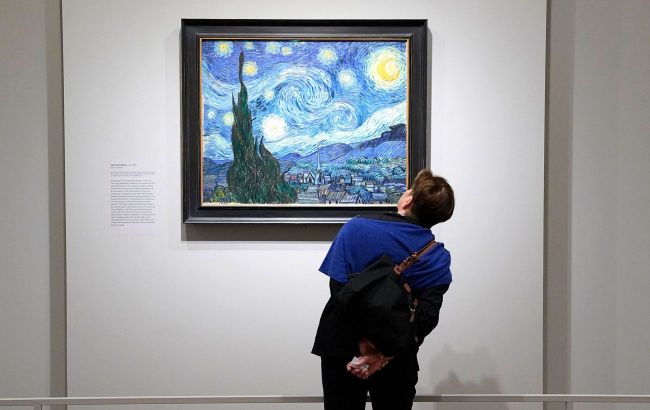One of Van Gogh's most famous paintings impressed scientists
 Van Gogh's painting has become very interesting for scientists (photo: Getty Images)
Van Gogh's painting has become very interesting for scientists (photo: Getty Images)
Recently, scientists discovered patterns in a Vincent van Gogh painting that are opening new horizons for understanding not only art but also physical processes. This unexpected link between painting and science has sparked lively discussion among art historians and physicists, according to the journal Physics of Fluids.
Physicists analyzed a digital version of Vincent van Gogh's The Starry Night and found that the turbulent flows depicted on the canvas adhere to different models depending on the scale of the structures studied.
In physics, turbulence describes complex flows that arise in liquids and gases and their unpredictable behavior. It turns out that the patterns of turbulent flows in van Gogh's painting can be classified according to various turbulence theories.
At the macro level of the painting, the vortices follow the Richardson–Kolmogorov cascade model, which explains the transfer of energy from larger to smaller scales in turbulent flows.
At the same time, on smaller scales of individual vortices, physicists observed turbulence corresponding to Batchelor's theory, which pertains to the behavior of flows in low Reynolds number environments.
A high-quality digital copy of the painting was used for the research, allowing scientists to closely analyze the turbulent structures.
Using the Fourier transform method for spectral analysis, researchers were able to determine the nature of the vortices in various parts of the canvas.
Van Gogh's painting technique also played a crucial role: by using linseed oil mixed with stone powder, the artist was able to accurately capture the physical structure of vortices even at the smallest scales.
These findings suggest that Vincent van Gogh may have intuitively or consciously represented complex phenomena of real turbulence in his painting.
The study of the painting not only sheds new light on van Gogh's artistic technique but also offers new opportunities for using works of art to study physical phenomena.
Earlier, we discussed the discovery of a hidden sketch under a 500-year-old da Vinci masterpiece.
We also shared which 5 paintings by Taras Shevchenko became the most famous.

